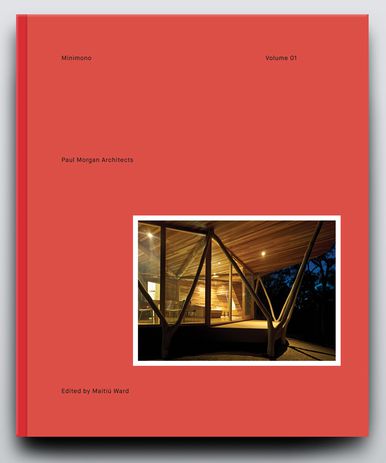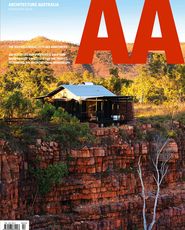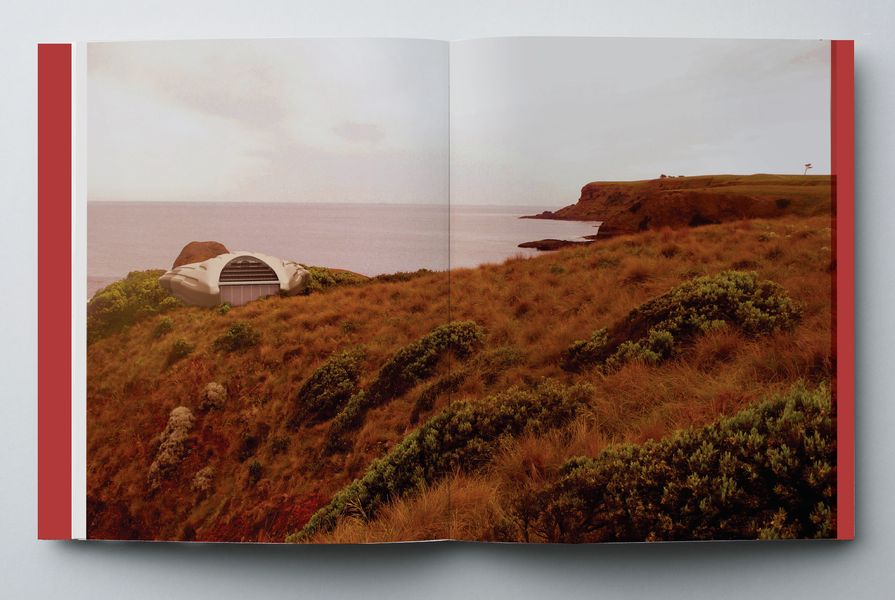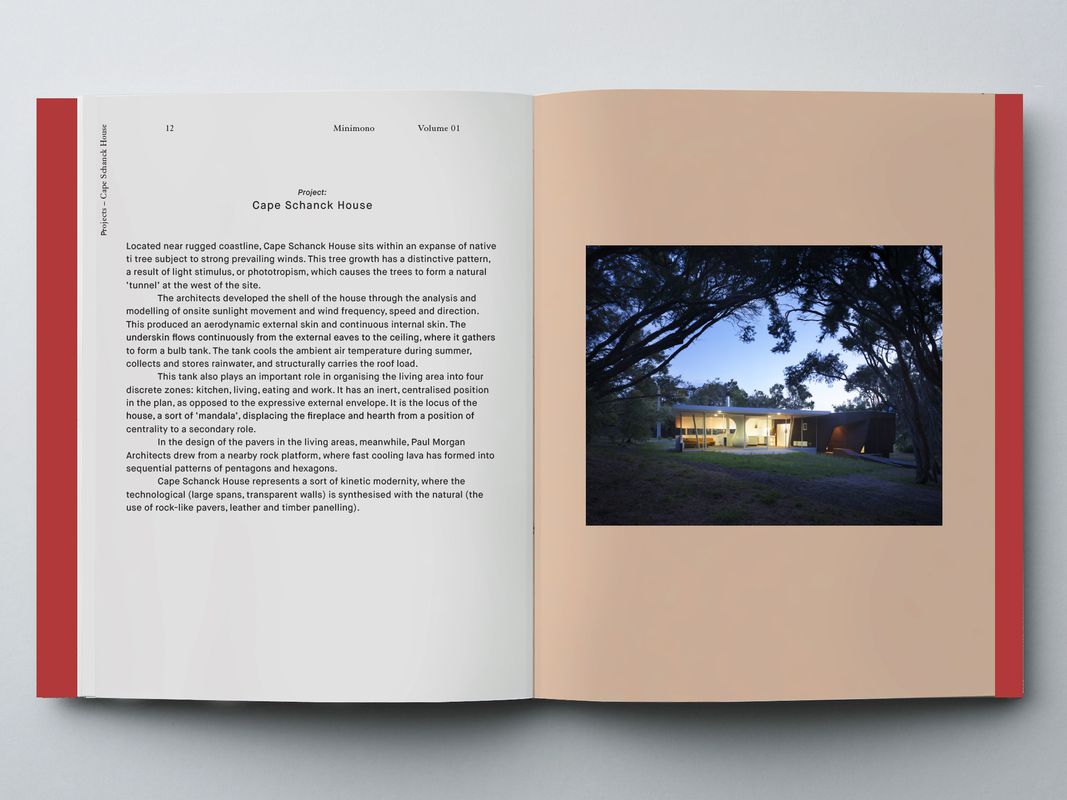This book about the work of Melbourne-based practice Paul Morgan Architects (PMA) is the inaugural volume in what promises to be an engaging new series of practice monographs published by Uro Media called Minimono. PMA has garnered its fair share of international accolades and strode into the national spotlight in 2007 when it won the Australian Institute of Architects Robin Boyd Award for its Cape Schanck House. This house, which cowers and twines around its coastal tea-tree site in Victoria, is a noteworthy conception – with its living space organized around an internal water tank in the shape of a drop. Is there a more poignant embodiment of a scarce resource on our island continent than the last drop? The tank is a subversive nod to local history and expresses a much larger intellectual ambition that is essential to this practice’s thinking and work.

Minimono: Paul Morgan Architects by Maitiú Ward (ed.).
Image: Courtesy of Uro Media
It is a practice that comes out of a specific milieu of Melbourne’s architecture community: one that is conscientious of its intellectual heritage, receives direct mentoring through local architectural discourse, demonstrates a commitment to the idea of architecture as a speculative practice, and shows an ambition for architecture irrespective of a slight program or minimal agency. Through its projects, finely illustrated in the book, the practice contemplates architecture as a kind of cultural edifice – ultimately a solid object, but built from the complexity of cultural constructs and lore. The projects presented investigate language and technique, elite and popular culture, the local and the international, the cocoon and the machine and other polarities acting on the architectural will. The much underrated Trunk House, which graces the cover, is part John Lautner, part Kevin Borland and part the primitive hut of Gottfried Semper, with a touch of the recluse’s bush humpy – yet it transcends each of them. The value of the Minimono series is that it can bring the work of such an intelligent practice to a wider national audience.
The book itself has a simple and relatively short format in order to act as a template for what will be a series of practice monographs. An essay by Dr Conrad Hamann precedes ten projects (ten is the template framework) divided by an interview between the practice’s principal, Paul Morgan, and Dr Vivian Mitsogianni, associate professor and Head of RMIT Architecture. The unexpected thing about the template is that, though it is designed to recede into the background and allow the work to take centre stage, the opposite may be true; the template itself becomes prominent and the project work has to assert itself through this structure.
The multiple strands of PMA’s work are pulled together by Hamann in his short essay. The insight and directness of this essay are worth the price of the book alone, not to mention its precision in placing the practice into the context of local discipline (for example, Paul Morgan was editor of Transition magazine from 1992 to 1993). Hamann reflects on how practices have a distinctive micro history within the fine branches of the family tree of a city’s architectural lineage. Hamann’s writing is a model for the academic writer, when engaging with architectural projects, of speaking so directly to the object itself and covering complex ideas in plain English. The essay enters deeply into the act of making, the decisions designers make and the will they summon up in order to create the object of architecture.
The projects section is perhaps the weak link in the book, not in any way due to the projects themselves (they are all fascinating), but rather due to the text and format, which lend the publication the rather neutral quality of a catalogue. Each short project text struggles to find the right voice to carry the book, either describing a project or its brief, clarifying the governing idea or claiming each project’s credentials. Perhaps a commitment to the polemical, or more of a bet one way, may be a more prosperous model for the future of this Minimono template. This, however, may well be the fate of the contemporary monograph, serving as part calling card for a practice’s future clients, part engagement in a discourse with colleagues and part elucidation of a practice’s intellectual agenda – and yet probably not fully satisfying any of these ambitions.
The interview between Morgan and Mitsogianni ameliorates this neutrality by bringing the intelligent voice of the practice’s principal out into the open, where it can be held up both to view and to account. It is a pleasure to read an architect give a conscious account of their work, even a charmingly self-conscious one, instead of the usual tropes of type, tectonics and the sense of place.
In all, there are only minor quibbles about this endeavour from Uro Media, and we can look forward to an ongoing series on established yet lesser-known design practices from around the country. Paul Morgan Architects is an accomplished debutant for the series and the work sets a standard for others to follow.
Minimono: Paul Morgan Architects (Maitiú Ward (ed.), Uro Media, 2013, 112pp, RRP $49)
Source

Discussion
Published online: 29 May 2014
Words:
Carey Lyon
Images:
Courtesy of Uro Media
Issue
Architecture Australia, March 2014

















